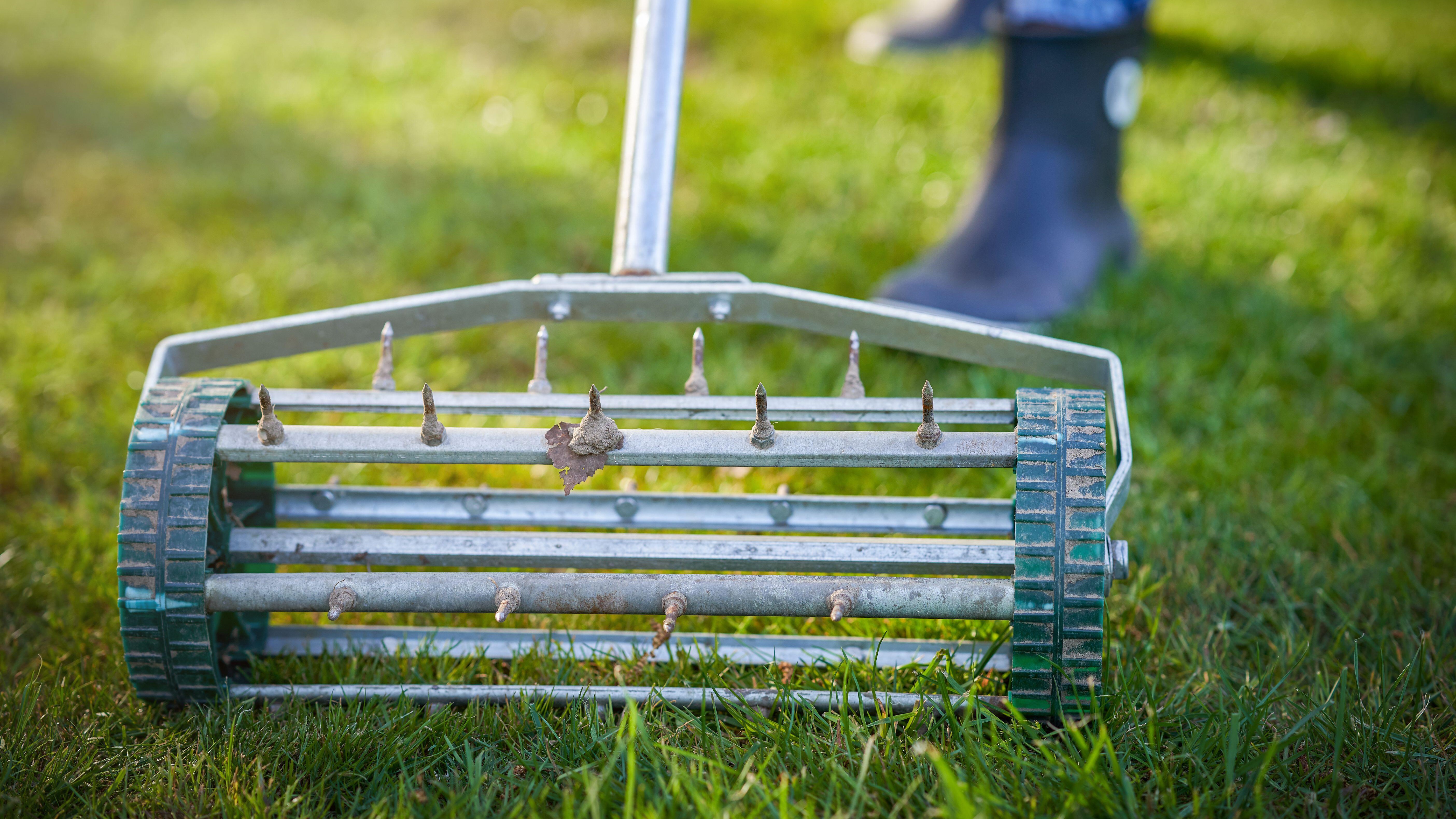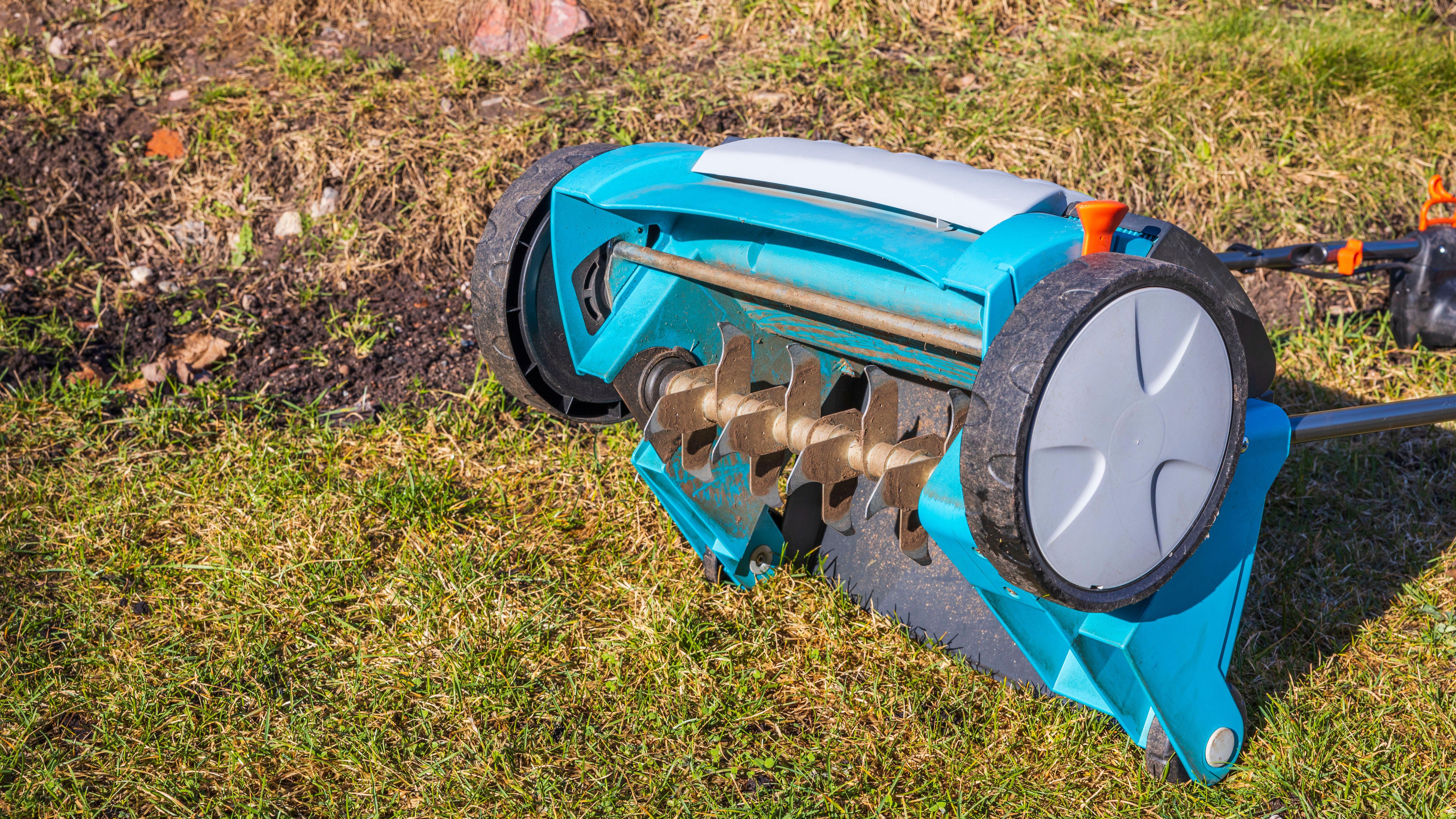What is a lawn aerator? Experts explain
For a picture perfect yard, invest in a lawn aerator

One often overlooked stage of lawn care is aeration, a process that helps the lawn and soil under it to breathe. Already tried all the green lawn care tips for a healthy green lawn? Aerating it, as well as investing in the best gas lawn mower or the best electric lawn mower, can help grass grow better.
But how do you do this, what is a lawn aerator and who needs one? We spoke to some gardening experts to explore what these tools do, why you need one, and some of the best models available to buy today.
What is a lawn aerator?
Lawn aerators are gardening tools that make holes in the soil to help air, water and vital nutrients reach the grass roots and penetrate the soil. The process can be done manually by hand (or by foot using shoe spikes), with a pitchfork or spading fork, or with tow-along tools that you attach to garden machinery.
Proper aeration leads to deeper roots, making grass more resilient and lush. "It's one of the most beneficial investments for homeowners seeking an attractive, enviable landscape," Eric Bramlett, a realtor, gardening expert and owner of Bramlett Residential, explains.

Eric Bramlett is a realtor and owner of Bramlett Residential, a mid-sized real estate brokerage in Austin, TX. He's worked on many property development projects where landscaping and lawn care are top priorities.
Lawn aeration is well worth the time and effort, gardening expert Gerry Boerlage from FormBoss tells us: "If you're interested in having a picture-perfect lawn, you need to take aeration seriously and a lawn aerator is an essential piece of kit.

Gerry Boerlage is the inventor of the patented garden metal edging system FormBoss. He is based in Victoria, Australia.
There are two types: plugs vs spike aerators, and the best choice for you will depend on the size of your yard, and your budget.
"A plug aerator removes small plugs of soil, a process known as core aeration. Spike aeration, where the aerator pokes small holes in the ground, is an alternative technique. Both methods encourage lush, healthy lawn growth, although plug aeration tends to have better results," explains Gerry.
Sign up to receive the latest news, reviews, buying guides and deals direct to your inbox
"Aerators are available in manual, towed, and powered varieties. The bigger your lawn, the more beneficial a towed or powered machine is. A manual aerator is fine for a smaller lawn."
One of our current favorites is the Brinly 40" Tow-Behind Plug Aerator at Lowes, a mid-range product available for around $343. Eric is also a fan, saying: "It's easy to use and does the job quickly across a 5,000 sq. ft lawn. I also recommend manual spike aerators for smaller yards - they provide an affordable option for homeowners on a budget."
On the cheaper side, the Suchtale 18" Push Spike Aerator at Amazon is a manual garden tool with an easy to push roller design ideal for small yards, available for around $79.99.
We're also fans of the EEIEER Manual Lawn Aerator, $43.99 from Amazon, which comes with a storage basket to collect the plugs.
Why use a lawn aerator?

Eric says: "The purpose of aerating is to alleviate soil compaction, which occurs when grass is subjected to heavy foot traffic or environmental pressure. Compacted soil prevents proper circulation to the roots, leading to thinner, weaker turf."
Aeration is also a good way to reduce thatch buildup. Thatch often promotes lawn health but when it gets too thick (an inch or more) it can block the flow of water and fertilizer getting to the roots, dehydrating and malnourishing the grass plant. This is when you might need to learn how to dethatch your lawn.
Aerating your lawn will give it the helping hand it needs to grow thicker and healthier. It also improves drainage and allows air, water and nutrients to really penetrate deep into the soil to encourage healthy grass growth. It's part of basic lawn maintenance for anyone who wants a lush garden.
How do lawn aerators work?
Lawn aerators work by using hollow tines to extract small cores or 'plugs' from the grass as the machine rolls across, explains Eric.
"As the plugs are removed, space opens up in the soil for better air, water and nutrients to penetrate down to the root level. Most aerators will space holes every two to three inches across the lawn," he says.
When should you use a lawn aerator?
If you want to improve the health and appearance of your lawn, then aerating is well worth the time and effort.
Eric told Top Ten Reviews: "It promotes stronger grass growth, reduces runoff and puddling, and cuts down on weeds and bald spots. Overall, aeration leads to a lusher, vibrant lawn."
There are a few warning signs that your lawn needs to be aerated. If you notice thinning grass, dry soil or discoloured areas, then it's time to get the aerator out.
If water is gathering in your garden and not draining properly, then aeration can help waterflow into the ground and to plants, so they can grow.

"The ideal time to aerate is during active growing seasons when the soil is moist but not soaked." says Eric. "For warm-season grasses like Bermuda, Zoysia, and St. Augustine, core aerate in late spring and early summer.
"For cool-season grasses like fescue and Kentucky bluegrass, aim for early fall. Clay soils and high traffic areas will need more frequent aeration — plan for at least once a year."
Pennington Kentucky Bluegrass Northern Grass Seed Mix, 7lbs | $27.97 at Walmart
This premium blend of grass seed was especially formulated to provide dark green lawn grasses. This 7lb bag will cover up to 4,666 sq ft of lawn, and is best suited to partial shade or 6-8 hours of sun light.
Maddy has been a writer and editor for 25 years, and has worked for some of the UK's bestselling newspapers and women’s magazines, including Marie Claire, The Sunday Times and Women's Health. Maddy is also a fully qualified Level 3 Personal Trainer, specializing in helping busy women over 40 navigate menopause.


